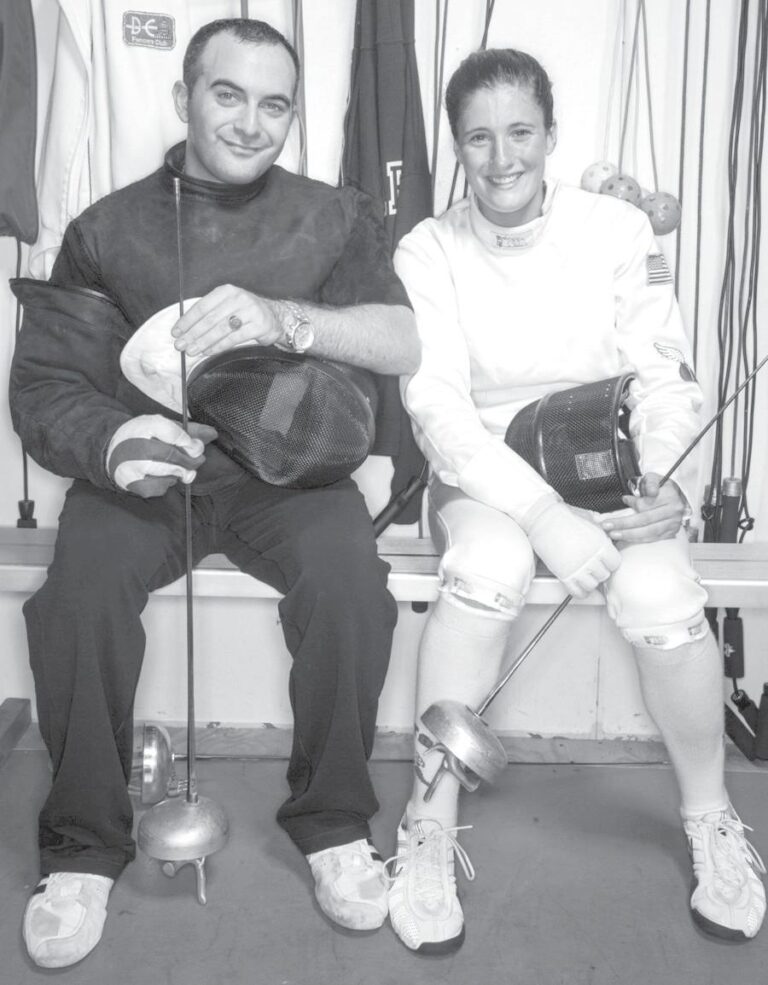Transgender Participation in Fencing: A Closer Look at Leadership and Policy
In recent times, the competitive fencing arena has gained significant attention due to a heated discussion regarding the involvement of transgender individuals in sports. Central to this debate is Damien Lehfeldt,the CEO of USA Fencing,who has faced criticism for how the organization addresses inclusivity and fairness for transgender athletes. As USA Fencing reassesses its policies under increasing pressure from various stakeholders—including athletes, advocates, and critics—Lehfeldt’s leadership is being put to a rigorous test. This article explores Lehfeldt’s role within USA Fencing, the challenges he encounters as a leader in this contentious environment, and the wider implications of this ongoing discourse on identity and equitable opportunities in fencing.
Damien Lehfeldt’s Position in USA Fencing Amidst Contentious Transgender Policies
As discussions about transgender participation continue to unfold, Damien Lehfeldt stands at a pivotal point as head of USA Fencing. Under his guidance, policies have been enacted that have ignited passionate debates among athletes, coaches, and advocacy organizations. Detractors argue that these regulations could jeopardize fairness and safety within the sport—prompting calls for policy revisions. As these conversations progress, scrutiny on Lehfeldt intensifies; it underscores the difficulties governing bodies face when trying to balance inclusivity with competitive integrity.
A variety of perspectives are emerging from different factions regarding these policies’ implications:
- Competition Integrity: Concerns persist about ensuring an equitable playing field during competitions.
- Athlete Welfare: The focus remains on safeguarding both psychological well-being and physical health for all competitors.
- Evolving Policies: Ther is an urgent need for transparent approaches grounded in research when formulating new guidelines.
Lehfeldt has expressed that his goal is to create an environment where every athlete can compete while acknowledging evolving understandings of gender identity. This intricate balancing act mirrors broader societal discussions where sports organizations must navigate sensitive issues to ensure all participants feel recognized and valued.
Effects of Current Transgender Regulations on Fairness and Inclusivity in Fencing
The ongoing dialog surrounding transgender participation has sparked significant conversations within the fencing community as USA Fencing faces scrutiny over its existing regulations. Advocates assert that these rules foster inclusiveness, enabling transgender individuals to engage fully in a sport historically lacking diversity. They emphasize recognizing gender identity as crucial so every athlete can experience empowerment through competition. However, opponents argue that such inclusiveness may compromise fairness, especially at elite levels where physiological differences could significantly influence performance outcomes.
The following points illustrate some tensions arising from this issue within the community:
- Dichotomy Between Equity & inclusion: Striking a balance between competitive equity while including transgender athletes has led to divided opinions regarding policy effectiveness.
- Differential Performance Levels: Questions arise about whether transgender women possess inherent physical advantages over cisgender women during competitions.
- Cultural Impact:A number of athletes express concerns about how current rules might affect team dynamics or undermine fair competition principles.
| Transgender Athletes | Advocate for inclusive policies allowing authentic participation |
| Cisgender Athletes | Concerned about potential advantages affecting competition |
| Coaches & Officials | Aiming for equilibrium between inclusion & fairness |
Guiding The discussion: Recommendations For Future Gender Participation Guidelines in USA Fencing
The current discourse surrounding gender participation highlights an urgent need for clear guidelines within USA Fencing. As stakeholders purposeful over existing rules impacting transgender competitors’ experiences; it becomes essential for USF’s leadership team consider recommendations aimed at promoting both fairness alongside inclusivity moving forward . Key areas warranting attention include :
- Comprehensive Research : Collaborate with scientific experts analyze physiological variances related competitiveness involved .
- Engagement With Stakeholders : Include input from diverse groups like parents ,coaches ,and advocacy organizations shaping effective policy progress .
- <b Regular Review :< / b Establish periodic evaluations adapting guidelines according evolving nature sports science societal values .
Additionally , fostering open dialogues around these policies will be vital building trust throughout fencing communities . To enhance understanding compliance ;USA fencing might implement strategies such as :
| </thead<tbody<tr<td Workshops<td Host educational sessions informing coaches athletes new guidelines implications.
</ tr<tr<td FAQs<td Develop dedicated website section addressing common inquiries rationale behind rules. </ tr<tr<td Feedback Channels<td Create communication avenues allowing players voice concerns suggestions related guideline adjustments. /tbody/ table/ div/> Conclusion: Navigating Complexities Ahead
|
|---|




